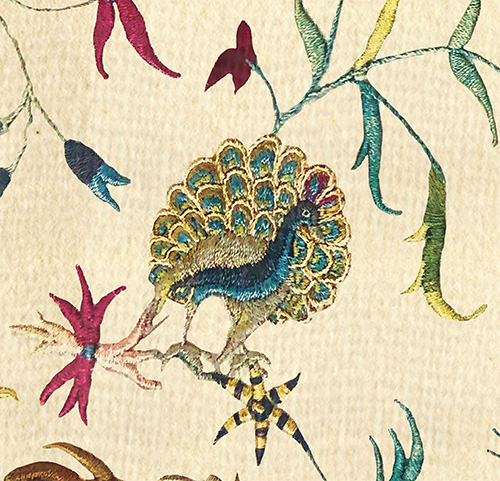
Old World Quilts
Sept 6, 2019 - March 15, 2020

Old World Quilts transports us to the seventeenth and eighteenth centuries, an age of burgeoning global commerce and cultural exchange. Here you will view some of the earliest textiles from the International Quilt Museum’s collection. In this era, Europe’s desire for goods from unfamiliar, “exotic” Asian cultures led to unprecedented growth in overseas trade, which also fueled a boom in domestic manufacturing and fed a growing consumer mentality. The introduction of novel production techniques and materials, as well as the development of hybrid designs and aesthetic approaches, resulted in textile designs that are still relevant in our lives today.
The global sea trade initially began with the 1498 discovery of a sea route around Africa’s southern tip leading to India. Prior to 1500, existing land routes—including the Silk Road—were primary conduits for bringing Asian goods to Europe. However, the gradual loss of Roman territory in Asia and the rise of Arab power in the Middle East pushed merchants to seek other passageways. By 1600, the major trading companies of the Portuguese, Dutch, and English were importing great quantities of silk and cotton textiles by sea from India, China, and Japan as a part of the lucrative Asian spice trade. Textiles very quickly became prized commodities used in home décor and clothing.
Textiles imported to Europe reflected the traditions of the Asian regions where they were produced, but also the preferences of the consumers in the European countries where they were sold. Merchants requested specific colors and figures; patterns, books, and painted images called “musters” were sent to Indian production centers specifically for tailoring designs to individual markets. Even with these modifications, key materials, motifs, and aesthetic elements remained fashionable for centuries, forming a global textile language that ties these Old World Quilts together.
The quilts in this exhibition are from the International Quilt Museum’s Permanent Collection.